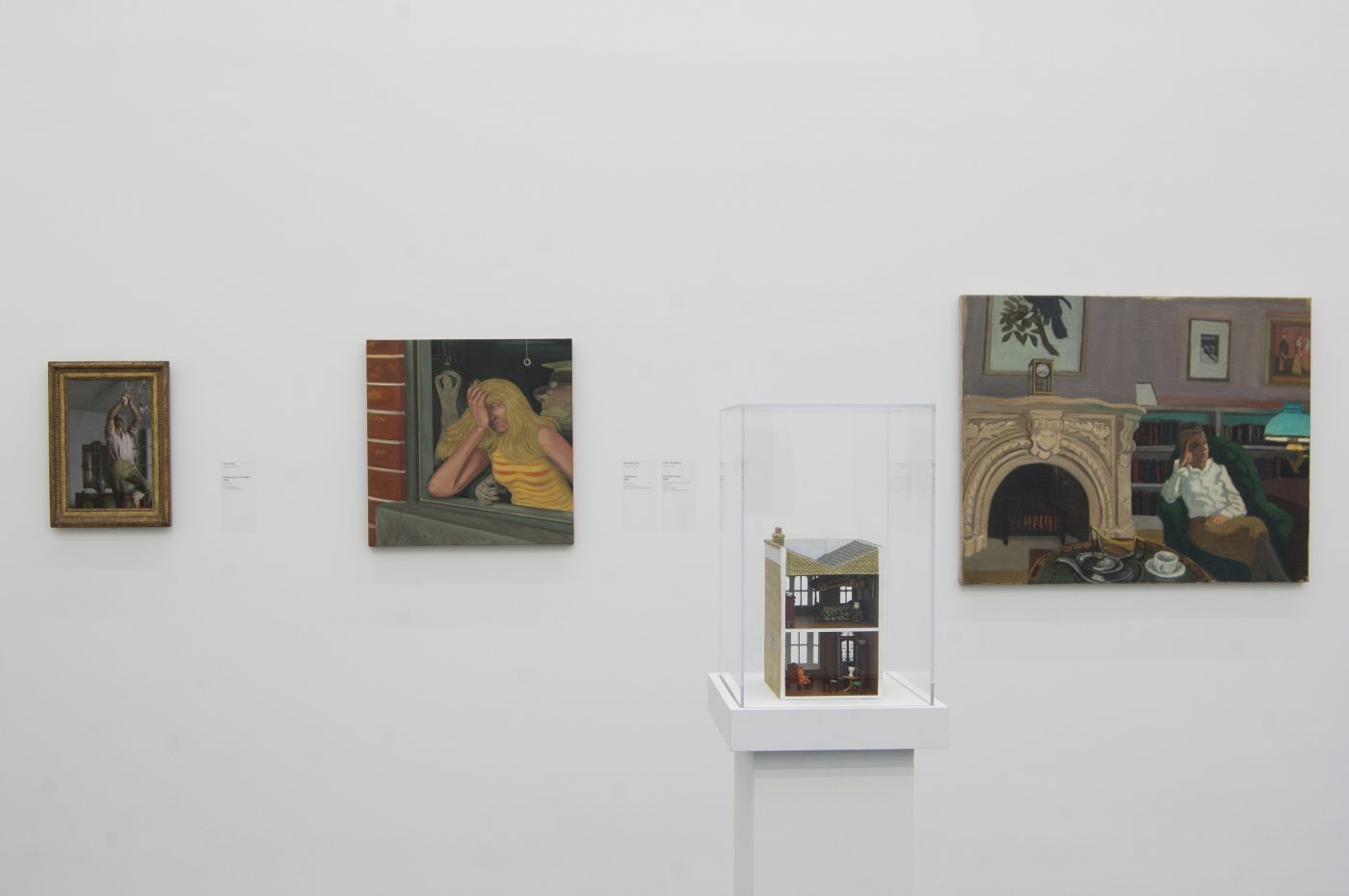Home Sweet Home
Permanent Collection Installation
November 1, 2015–October 30, 2016
In Winslow Homer’s 1863 painting Home Sweet Home, two Union soldiers sit at a forlorn campsite look at a smoking campfire, hard biscuits on a tin plate, and a rain-soaked pup tent. Contemporary viewers would have immediately associated this title with the song of the same name, written in 1823 by John Howard Payne of East Hampton, and a favorite tune of both Union and Confederate troops. The phrase survives as a clichéd but true summation of traditional views of home. But in contemporary times, the notion of “home” carries many layers of meaning and philosophical and ideological ideas about rootedness and belonging. Artists like Fairfield Porter and Robert Dash easily focused on intimate surroundings, using home as a jumping off point for both artistic composition and emotional resonance. Paintings like Porter’s A Day Indoors or The Living Room or Dash’s Afternoon #2are infused with a sense of comfort and easy personal interactions. These interiors, even when empty of people, signal a level of well-being and warmth.
For Christa Maiwald and Monica Banks, attributes of home—pretty tea cakes created by embroidery or ceramics—allude to the ideal of feminine pursuits. But on closer look, these emblems of domesticity have an edgier aspect expressed through the artist’s engagement with the cat on the cake in Maiwald’s embroidered canvas, or the dead bird decorating Banks’s Tribute.
In Yinka Shonibare’s unpopulated Victorian row-house, the chairs and bed are covered with “African” Dutch wax fabric, which is rich with meaning for the artist who was born in London, raised in Nigeria, and now lives in England. Inspired by Indonesian batiks and produced in Europe for the West African market in the nineteenth and early twentieth centuries, the fabric has come to symbolize for Shonibare the complex web of economic and racial interactions—and inter-dependencies—among Europe, Asia and Africa. This charming and seemingly benign dollhouse is packed with Shonibare’s sense of alienation and dislocation—posing the fundamental question “where do I belong?” That same sensibility infuses Michael Cline’s The Patriotwhere a young woman propped in the open window is surrounded by nightmarish creatures of the artist’s invention.
Home also refers to the natural human interactions among family and friends. Like Porter, who found unlimited inspiration within the confines of his home, garden, and studio, Elizabeth Peyton and Warren Brandt make as their focal point carefully and fondly rendered portraits that visually rejoice in the warmth of the personal connections that help us find roots in a community. Nowhere is the melding of life, work, family, and friends more evident than in Joe Fig’s reimagining of the adjoining studios of the artists April Gornik and Eric Fischl. Unlike Shonibare’s dollhouse, April and Eric: August 10, 2004 radiates with evocations of sanctuary. These miniature recreations of the artist’s largely private spaces in which they are free to create aptly illuminate the many different ways that “home” has meaning in the world.



